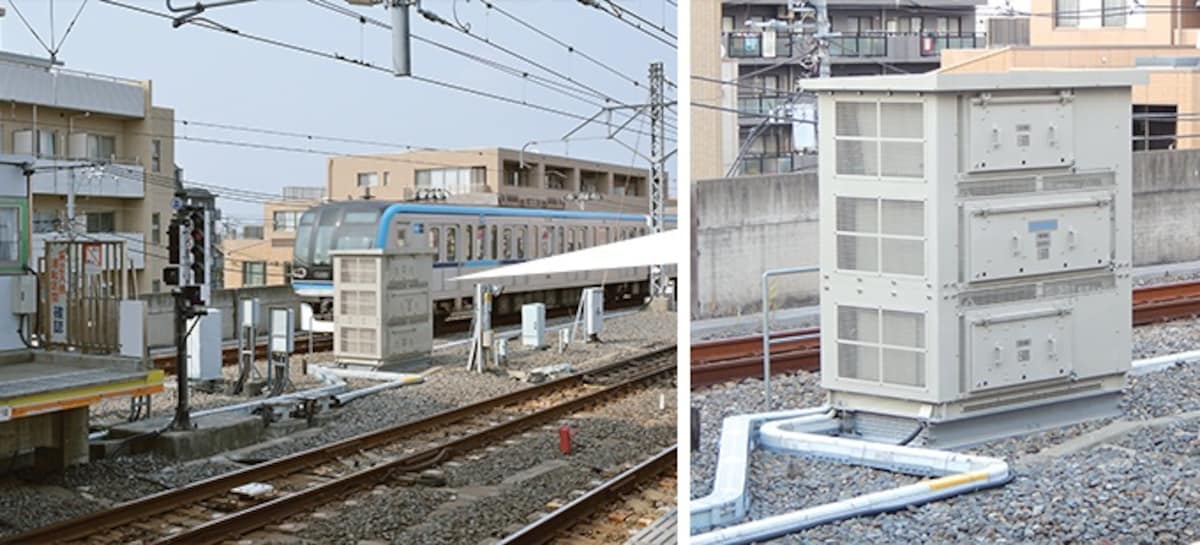Using Regenerated Energy from Trains
Since 2014, Tokyo Metro—the firm that operates the subway lines that run through downtown Tokyo—has been using regenerated power from subway cars to power the equipment in train stations.
Regenerated power is the current produced when a train applies its brakes. Through a current collector called a pantograph, this electricity is fed back to the aerial wiring and primarily used to power other trains nearby. This has been implemented as one of the energy conservation measures for railways.
Until recently, however, that regenerated power went to waste when there were no other trains nearby. When there was already excess current in the system, in fact, the voltage of the aerial wiring spiked, causing problems in the system’s ability to provide stable electricity to each train car. As a result, the trains were designed to curb excess power generation, ultimately causing a net waste of energy in the system. “Making efficient use of this surplus of regenerated energy was one of the major issues for us,” says Kohta Mantani of Tokyo Metro’s Electrical Division.
Although the regenerated power starts as direct current, it can be converted to alternating current through a station auxiliary power supply unit and used to run the lighting, air conditioning, escalators and other facilities at stations. This means the system feeds the energy back into the station itself rather than wasting it.
“What is revolutionary about the station auxiliary power supply units is not just the technology to convert the current, but their compact size,” says Mantani with enthusiasm. The units, about the size of a large locker, only require about 15 square meters of space (pictured above right), making them dramatically more compact than the room-sized units used in the railroad industry to date. It is this compact size that makes deployment and setup easy.
One of these units is installed at Myoden Station on Tokyo Metro’s Tozai Line. Its tiny, unassuming presence gives no indication that it is powering the station itself. Mantani laughs: “Unbeknownst to passersby, there is a little beast of a device tucked beside the railway tracks.”
Since deploying this unit in June 2014, Tokyo Metro has yielded an energy savings of 600 kilowatt-hours per day—the equivalent of sixty homes’ worth of energy consumption. Although installed at only one station so far, if the rollout continues it could be possible for trains to produce a major supply of energy for train stations while running.
Myoden Station was picked as the first site because it had the ideal conditions for generating and collecting power, such as a suitable space for the equipment, tracks on a slope that necessitates braking (and thereby produces power) and the train schedules. For these devices to become mainstream equipment, however, they must be refined further to allow for power generation and transfer even under ordinary conditions.




